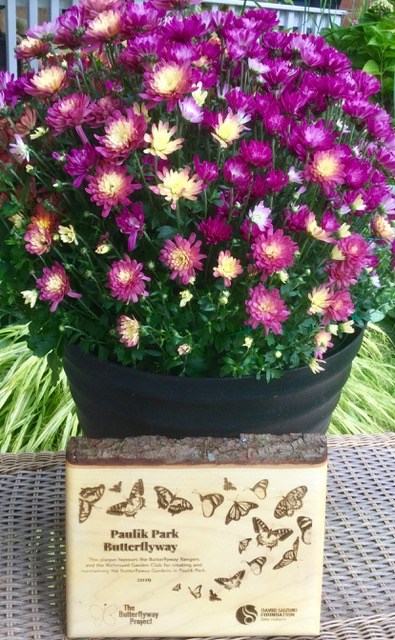While working in the gardens at Paulik Park, signs of autumn approaching surrounds us. Late summer blooms are still flourishing. Fall crocus are sprouting up everywhere in the garden beds in the Park. The air is tinged with a cool breeze.
This is a great time for planting most shrubs and trees. Fall is also a time to make plans for what you want to add to your garden.
A well planned garden should have something to look at in every season. A formula to remember is the four F’s - foliage, flowers, form and fruit. Fruit is quite often the most overlooked and under-utilized garden design element.
The unexpected beauty of berries can take your garden through crisp fall days and right through the winter season.
The following shrubs and trees are a great way to add fall and winter interest as well as welcome snack for birds and other wildlife when food source become scarce.
Mountain Ash is prevalent throughout Paulik Park. Mountain Ash is often underused as a landscape plant. The fruit of most species of the Mountain Ash are orange or red, but some are white (Sorbus hupehbensis) and some are pink-blushed (S.hupehensis ‘Rosea’). There are some beautiful examples of the pink and the white berry Mountain Ash in VanDusen Botanical Gardens.
Beautyberry has incredible small clusters of pearlized purple berries that appear late summer on otherwise a very nondescript shrub. Tiny pinkish flowers morph into the traffic stopping berries at this time of year. Again VanDusen Gardens has some lovely specimens of Beautyberry (Callicarpa americana and C.bodinieri).
We recently planted Serviceberry in Paulik Park to include in our pollinator plant repertoire. The berries of Amelanchier alnifoliao are delicious. Once this plant is well established we will enjoy showy white flowers in the spring and beautiful yellow foliage in the fall.
Snowberry grows wild in our forest area of Paulik Park. Symphoricarpos albus is native to our area. It has arching branches that bear beautiful clusters of white berries that last well into our winter months. It has small white and pink flowers that attract butterflies and hummingbirds and is a critical host plant for the Sphinx Moth. This shrub can tolerate all types of soil, even clay. In our forest, it is primarily peat type soil.
Crabapple was a popular fruit tree when I was growing up. Most gardens contained a crabapple tree or two for the delightful jam that was made from the fruit. Crabapples have dainty spring flowers and then add incredible colour to late-season landscape through the their show of fruit. The fruit ranges in shades of yellow, orange, tree and red at this time of year.
So come on over and visit Paulik Park as fall colours permeate the gardens and the wildlife become very active preparing for the change in seasons.
Lynda Pasacreta is the current president of the Richmond Garden Club. Richmond Garden Club adopted the care and stewardship of Paulik Park in 2008. Volunteers include Garden Club members and community volunteers. Lynda Pasacreta, on behalf of Paulik Park volunteers, received a plaque from David Suzuki Foundation’s Butterflyway Project for the work done to create and maintain Butterflyway gardens in the Park.



